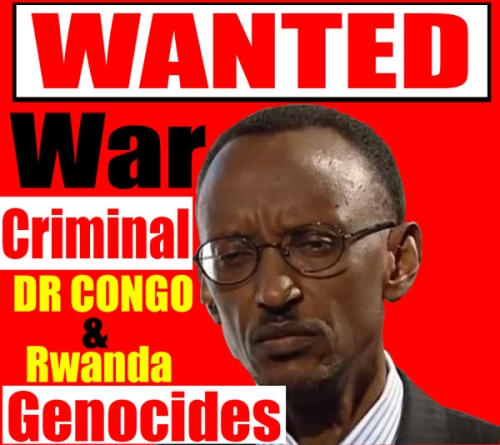
Tibuhaburwa Yoseri Buzariranwa a.k.a Yoweri Museveni with his Colonial Paymaster, Monsieur Gordon Brown
Fear has been used as a foundation by the Western Imperialistic forces and their Burundi born agent- Tibuhaburwa Yoseri Buzariranwa a.k.a Yoweri Museveni to commit genocide in Africa.
Psychological tools such as; HIV/AIDS, terrorism and Idi Amin(media) have been used very effectively to create an authoritarian system that divides political power and thereby conceals political responsibility-the less the people know what is going on, the easier it has been to commit and conceal genocide in Africa.
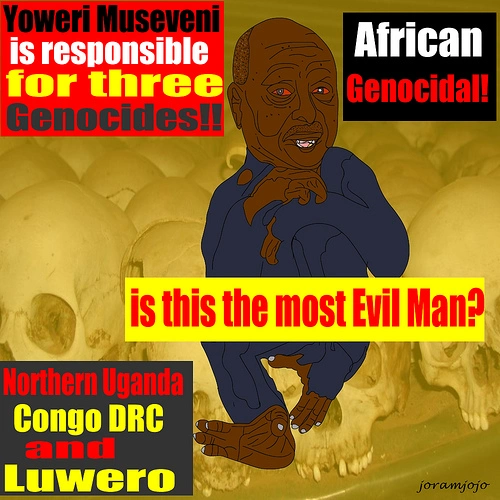
Yoweri Museveni
On the other hand we have the authoritarian form of the army and of a political-military organisation that terrorises the African people with impunity from Somalia to D R Congo . The Western imperialistic genocide mafia has been so effective at concealing the genocides in Somalia,Uganda and DR Congo.

Facts; more people in Uganda have died at the hands of Yoweri Museveni, compared to the numbers killed in the Rwanda genocide. If the African people (Uganda, DR Congo and Somalia) were pathetic like the imperialistic genocidal entity in the great-lakes of Africa (Kagame and Museveni) at collecting skulls and bones to display them for the world to receive sympathy and as an excuse to commit more murder, then you would see huge mountains of their loved ones than those of Rwanda and Darfur put together.

The World is not as gullible as they wound want them to be, they know who the real murderers are.
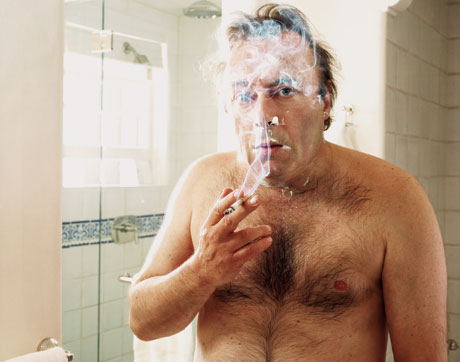
Christopher Hitchens
Christopher Hitchens is a peripheral player in the propaganda campaign to shield the Museveni regime however. In fact, as Hitchens notes in the Vanity Fair text, he traveled in Northern Uganda to do his Lord’s Resistance Army story with the assistance of John Prendergast of the International Crises Group. It’s likely that the Ugandan government provided security for the Hitchens/Prendergast mission. The International Crises group is a flak organization pursuing an aggressive U.S. foreign policy, premised on predatory capitalism and neoliberal economics, behind a face of “humanitarian” concern. On the ICG board, for example, are some of the world’s leading military strategists. ICG directors include former Supreme Allied Commander General Wesley Clark; former National Security Advisor Zbigniew Brzezinski; and Thomas Pickering, formerly special assistant to Henry Kissinger, Under Secretary of State for Political Affairs in the Clinton White House, and now a Boeing Corporation executive.
According to Award winning Journalist,keith harmon snow

Ugandan President Yoweri Museveni accused for genocide and war crimes in northern Uganda since 1986.
What is so disturbing is that Hundreds of thousands were massacred, maimed and displaced by their own government’s troops whith the knowledge of parasitic western NGO’s such as Oxfarm,Caritas,World Vision International, etc. they turned a blind eye and continued to mislead the world that it was the work of the Lords Resistance Army.
More than 500,000 people, were beaten up and then arrested as rebel suspects while rape for girls under the age of 15 was used as a biological weapon to kill them with AIDS. The Acholi people had nowhere else to go and were not allowed to leave the concentration camps since their homes had already been destroyed by the government and their land sealed off with the knowledge of Major General Salim Saleh(Yoweri Museveni’s Brother) and Major General Mugisha Muntu the Army Commander at the time. By the time Major General Mugisha Muntu was retired due to having HIV, more than 2 million Acholi people were in concentration Camps.
Today Uganda’s most notorious illegal detention centers is housed among Western Ambassadors’ residence. The locality serves as an unlawful detention, torture and a transit center for enforced disappearance (Cold-Blood Murders) for mainly Ugandans.The infamous locality is run by American, French and British trained security personnel at the expense of the Ugandan taxpayers.

When the British monarchy and its Genocidal client Yoweri Museveni, were busy feasting on caviar and other expensive drinks-during the Commonwealth Heads of Government pimping retreat in Kampala (CHOGM) 2007; 340 innocent Ugandans were arrested and tortured in different parts of the Country and subjected to brutal treatment. Ugandans were hit repeatedly with gun butts, slapped in the head and ears, beaten with fists, whips, canes, chairs and shoes, beaten with metals, starved, and water-boarded until they became invalids.
A cocktail of brutality such as; painful stress positions, red chilli pepper into eyes, nose and ears, that causes excruciating pain and electricity shock on detainees – was the favourite menu of the day by their tormentors.
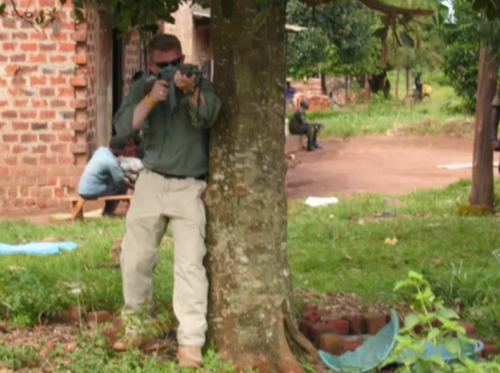
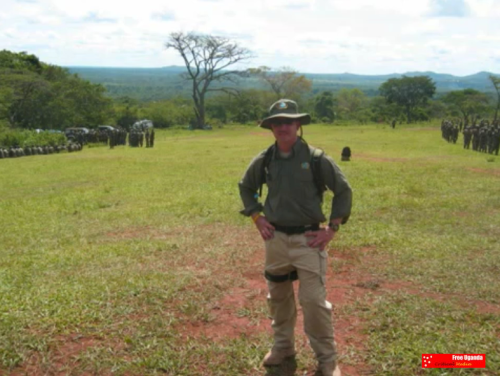
Genocide Instructor
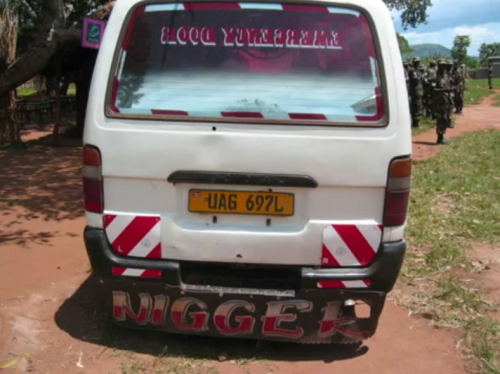
The genocide instructors transporter
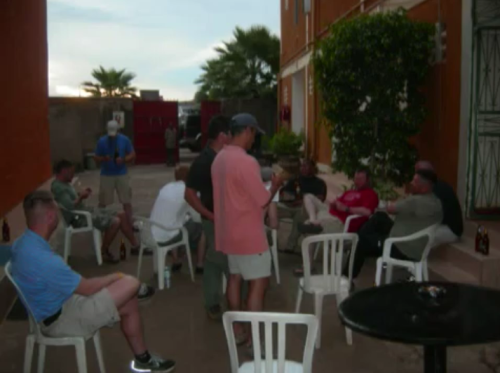
Genocide Instructors

African Genocidals
Okay, you might think that this is some malice bullshit by an anti-government element but very wrong because brutality is the weapon that these cowards have been using in Northern Uganda, DR Congo and Somalia to carry out a silent genocide for years.
Western regimes and their genocidal puppets in Africa always creates a slam-dog to blame for their atrocities. This has been the Case in Uganda with the Lords resistance Army.
Joseph Kony’s Lords resistance Army has not killed more than a thousand people for the last Seventeen years. However the American and British trained Uganda Army (UPDF) has killed in Somalia,Uganda,Sudan,Rwanda,DR Congo and Central Africa Republic 5 million Africans. This is a fact and not some silly or malicious accusations. i.e.there was a time when more than 1000 people where dying in Western sponsored concentration camps in Northern Uganda. This went on for (work-out the maths) more than 6years.
In spite of the Lords resistance Army’s Christian fundamentalism, there’s no evidence of mass graves or masses of people with lips and ears chopped off nor is this the case with the Al-Shabab, Somali Mujahadeens.
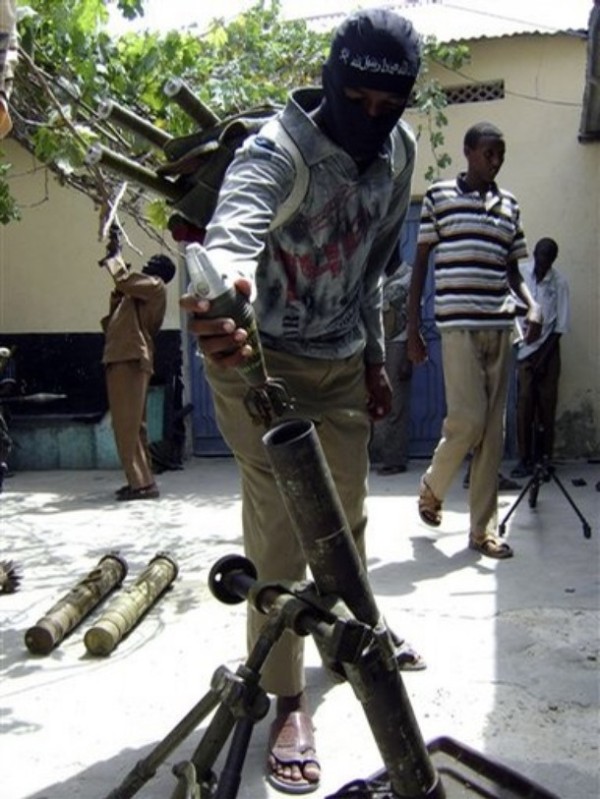
Al-Shabab Mujahadeen unit in mogadishu
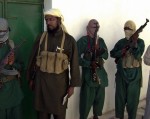
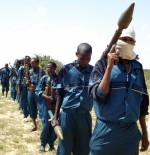
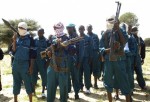
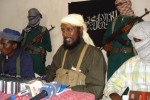

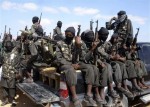



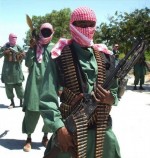
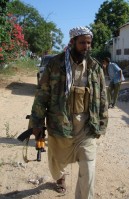

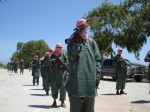
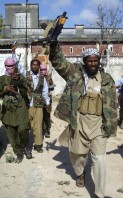
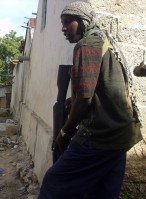
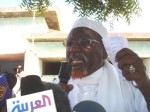

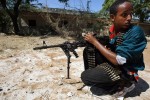
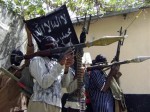

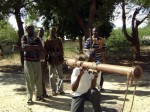

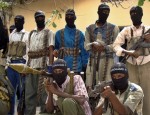
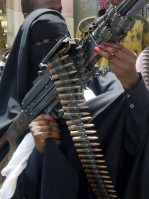
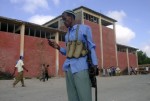
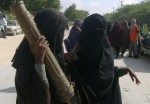
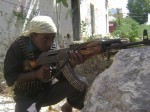
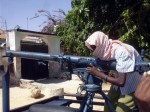

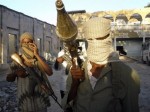
Click for:New Al Shabab Photos
The Anti-African forces have been quick to dismiss Somali Freedom fighters as Some Islamic Fundamentalist associated with Al-qaida. But this has been not the case and after realising that they were very wrong, they then changed their tune to calling Somali Marine tax enforcers, Pirates.Very pathetic, what sort of pirates leaves the ship cargo intact without plundering it? Oh, please.., why do non-African think that, African waters are theirs and they can just cruise through with their ships polluting and not paying any tax, would an African ship just sail in any of those non-African waters without being sunk?
The reason why Somalia has succeeded at resisting foreign plunders and genocidal forces is because of commonsense and a good understanding of foreign evil.
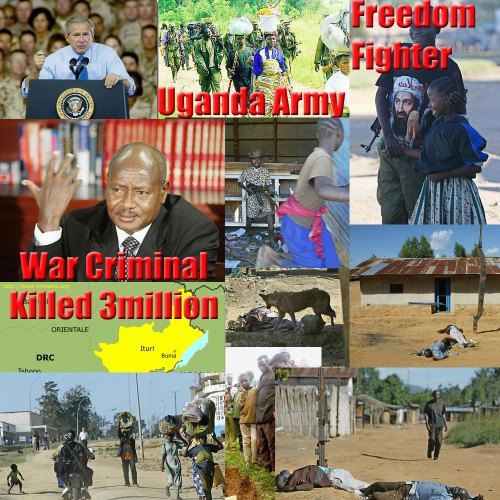
But this has not been the case in Uganda and DR Congo because the people are so greedy and have no conscience when it comes to profiteering. Instead of advocating for the victims of the genocide both in Uganda and DR Congo, 99% of the non governmental organisations saw this as an opportunity to make a fortune.
A new profiteering zone was born and named ” the Great Lakes region of Africa”. To Justify the profiteering, an anti Lords Resistance Campaign was manufactured and exported to the World. Thus, Joseph Kony’s Lords Resistance Army and HIV/AIDS poop-ganda (negative stories) became the main intangible export for the Uganda’s tyranny.

The Sister's Struggle in East Africa
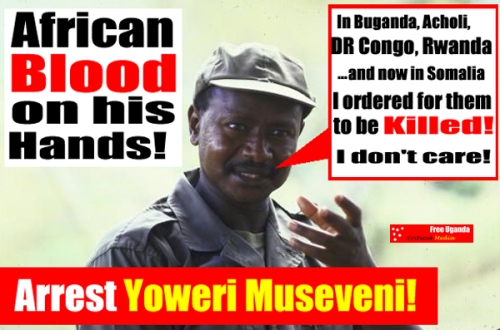
Yoweri Museveni African Butcher
What happened to the hundreds of children that were in NRA(Now UPDF) and sent to Mubende. Where are all those children that In 2005, escaped or were captured or released from the LRA and pressured to join Yoweri Museveni’s forces and fight the LRA. Where are they now?
Why is Salim Saleh, a UPDF officer believed to have been banned from traveling to the United States over the UPDF’s role in the plunder of mineral resources from the DR Congo in the late 1990s, still a Cabinet Minister?
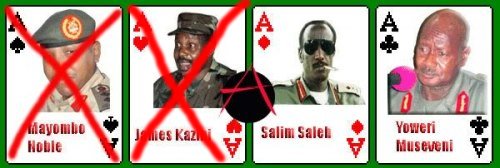
Why should a Killer and thief like Yoweri Museveni, still be roaming western Capitals when the evidence is there for his arrest. Why should Sudanese Omar Bashir be wanted by ICC and Not Yoweri Museveni that has commited even worse crime?
See Illegal exploitation of natural resources and other forms of wealth of the DR Congo
Why should Darfur(less than 1000 dead) be called a genocide and not DR congo(6million dead).

Very simple. Yoweri Museveni is a western client and Omar Bashir a Chinese client-The likes of Tony Blair and Bill Clinton are the ones that have planned,armed and sponsored the likes of Paul Kagame to commit genocide.
According to top secret intelligence documents that we have obtained, Uganda armed the invasion of Rwanda for an ambitious plan of a “regional war of liberation” which aimed to unite 7 African countries under the leadership of President Yoweri K. Museveni. Reunited, these countries would form a regional showcase called “Great Unified Region; United Great Region” and to have a “Red Army Reserve, of 2,000,000 men and willing to subject the rest of the Saharan Africa to war and terror. Museveni intended to act with the support of the United Kingdom and the United States, where they hoped to further address the influence of emerging powers like China and India and impose an Anglo-Saxon political, economic and military imperialistic shadow on the African continent.
We shall be publishing the report after editing it as its 450 pages long.
Paul Kagame is another Western Client that has butchered millions of innocent people
Paul Kagames Genocide Portifolio
The untold Truth about this killer
Paul Kagame and Rwanda Genocide
Genocide against the Hutu People
Paul Kagame’s War Crimes, Crimes against Humanity, and Crimes of Genocide
How Paul Kagame exports the Genocide Brand to UK and USA
Arrest Paul Kagame for War Crimes: Paul Kagame Killed Thousands of Tutsi And Hutu People
I’m not a big person on the world stage but big men like Alison Des Forges, Senior Advisor at the Africa Division of Human Rights Watch. said:
“Uganda sent its troops into Congo supposedly to assure its own security, but in the process, it has caused greater insecurity for its unfortunate neighbors,” said Alison Des Forges, Senior Advisor at the Africa Division of Human Rights Watch. “Pulling out some of its troops does not relieve Uganda of the responsibility for investigating and punishing the soldiers who have been involved in these crimes.”
Des Forges said that Congolese leaders, including the heads of political factions and organizers of militias, have also violated the rights of their fellow citizens in Ugandan-dominated zones. The Ugandans trained local combatants who were recruited by rival political leaders on the basis of personal or ethnic loyalty, and who were more likely to be used for local advantage than in the war against the Congo government. Both the Ugandans and leaders of the Congolese Rally for Democracy-Liberation Movement (RCD-ML) recruited and trained children as combatants. In August 2000 Uganda airlifted 163 children from Congo to Kampala for military training.
“Uganda has repeatedly promised to end the use of child soldiers, yet here it is openly teaching Congolese children to make war,” said Des Forges. “When does it plan to start making good on these promises?” Congolese political leaders in the Ugandan-controlled region have detained rivals, held them in inhumane conditions, and sometimes tortured them. Ugandan soldiers have similarly abused Congolese whom they have identified as opponents. Ugandan authorities in mid-2000 approved an alliance between RCD-ML leader Mbusa Nyamwisi and Mai-Mai, a local militia hostile to foreign occupiers, and even arranged to provide military training for them. Later, Ugandans rejected the arrangement and began fighting the Mai-Mai. In subsequent conflicts, Ugandan troops captured and summarily executed Mai-Mai combatants. They also attacked local people thought to have aided the Mai-Mai, killing civilians and laying waste their villages. Ugandan soldiers also backed the RCD-National, supposedly another rebel political movement but apparently really an operation to extract and market the rich mineral resources of the Bafwasende area.
“Ugandan soldiers have blatantly exploited Congolese wealth for their own benefit, and that of their superiors at home,” said Des Forges. “In competing for control of Congo’s phenomenal resources, the Ugandans as well as other parties to this war have committed countless atrocities against the Congolese population.”
Unless the International Criminal Court is also part and parcel of Yoweri Museveni’s African Genocide project, set out under article 15 of the Rome Statute of the International Criminal Court,an investigation proprio motu by undertaking a preliminary investigation of serious crimes committed in Ituri within the presumptive jurisdiction of the ICC for possible prosecution.
The Front for the Liberation of Congo in Ugandan occupied areas
The Movement for the Liberation of Congo (Mouvement pour la Liberation du Congo, MLC), headed by Jean-Pierre Bemba, controls much of Equateur province in the north. By early 2001, it had established its sway over another, less well organized rebel group, the Congolese Rally for Democracy-Liberation Movement (Rassemblement Congolais pour la Democratie-Mouvement de Liberation (RCD-ML), which claimed to control parts of North Kivu, and Orientale provinces in eastern Congo. Uganda engineered this merger among its Congolese rebel allies to unify their military against the government alliance, and to shield it from increasing international scrutiny of its role in manipulating local political divisions and ethnic conflicts as a means of consolidating its control over these resource rich areas.
Uganda reacted angrily to the release in mid April of the report of the U.N. Panel of Experts on the Exploitation of National Resources and other Forms of Wealth of the DR Congo, threatening at one point to withdraw from the Lusaka peace process. Under international prodding, Uganda dropped the threat and committed to withdraw its troops from the country, saying that they have accomplished their mission of defeating the insurgent Allied Democratic Forces (ADF).
Human Rights Watch in March 2001 published the report “Uganda in Northeastern DRC: Fueling Political and Ethnic Strife” which documented the following abuses in areas occupied by Uganda near the border between Uganda and the DRC:
Ugandan military forces have played a decisive role in local affairs, even changing administrative boundaries and designating provincial officials, taking advantage of an administrative void resulting from continuing disputes among the various offshoots of the Ugandan- sponsored RCD-ML.
Within the context of the broader war and the continuing political conflicts, a small-scale dispute over land between Hema and Lendu peoples in northeastern DRC, one of many which previously appeared to have been settled peacefully, grew in scale and intensity. The Hema were thought to enjoy general support from the Ugandans, attributed to a supposed ethnic bond between the Hema of the DRC and those of Uganda. >From the first violence in June 1999 through early 2000, an estimated 7,000 persons were killed and another 150,000 were displaced. In the most recent incident of violence in January 2001, another 400 people were killed during one day of violence in Bunia and at least 30,000 people were forced to flee the region.
The perception that the Ugandan army supported the Hema was made real in many communities by Ugandan soldiers who helped Hema in defending their large farms against Lendu attack and who helped Hema militia attack Lendu villages. In some cases, these soldiers provided support in return for payments to themselves or their superior officers. In at least one case, Ugandan soldiers also assisted Lendu in attacking Hema. In one reported clash Ugandan soldiers backing different sides engaged in combat against each other. The assistance of Ugandan soldiers as well as the provision of training and arms to local forces resulted in a larger number of civilian casualties in these conflicts than would otherwise have been the case.
Under the guise of creating an army for the rebel movement, Congolese political leaders developed their own groups of armed supporters, bound to them by ties of personal and/or ethnic loyalty. On several occasions in the last two years, these armed supporters have engaged in operations in which civilians were killed. Uganda trained these groups even when it seemed likely that they would be used in local ethnic and partisan conflict rather than as part of a disciplined military force.
All parties, including the Ugandans, recruited and trained children to serve as soldiers. In August 2000 Uganda transported some 163 children, part of a larger group of 700 recruits, to Uganda for military training. Only in February 2001 did the government of Uganda grant various international agencies access to these children with a view to their demobilization and resettlement.
Contending RCD-ML political leaders Wamba dia Wamba and Mbusa Nyamwisi as well as Uganda People’s Defence Force (UPDF) soldiers have illegally detained political leaders whom they have identified as opponents and held them under inhumane conditions. In some cases the UPDF and RCD-ML forces have tortured political opponents in detention.
The RCD-ML’s “prime minister” Mbusa Nyamwisi, a local leader from a third powerful ethnic group, the Nande, sought to increase his power base by allying with Mai-Mai forces, groups of local militia who had been fighting largely to expel foreign occupiers of their territory. Originally ready to tolerate this alliance, the Ugandans then rejected it. In subsequent conflicts with the Mai-Mai, Ugandan forces as well as Congolese rebels loyal to Mbusa extrajudicially executed captured Mai-Mai combatants. Subsequently, the UPDF attacked local people thought to have assisted the Mai-Mai, killing civilians and laying waste to their villages.
Ugandan soldiers also formed and supported the front organization called RCD-National, which appeared to be an operation to extract and market the rich mineral resources of the Bafwasende area rather than the political party which it claimed to be. This blatant exploitation of Congolese wealth for the benefit of both locally based and other more highly placed Ugandan military officers symbolized the larger exploitation of the whole region for the benefit of outside actors.
Proxies Pursuing Their Own Interests
Ituri is home to eighteen different ethnic groups, with the Hema/Gegere71 and Lendu/Ngiti72 communities together representing about 40 per cent of the inhabitants. The other major groups are the Bira, the Alur, the Lugbara, the Nyali, the Ndo-Okebo, and the Lese. With ethnic identity of growing importance, a new group has emerged, the “non-originaires”73, that is, `outsiders’ who were not born in Ituri. The Nande of north Kivu represent the most prominent of the “non-originaires”, due to their importance in the business sector. The emergence of Mbusa Nyamwisi, a Nande, as the leader of the RCD-ML raised the profile of the Nande in Ituri. Hema elites seeking to assert or protect their control of the political and economic spheres in Ituri tend to consider the Nande as direct competitors.
The Hema, Lendu, and other ethnic groups that serve as proxies for governments and rebel movements also seek to set agendas that serve their own interests. They are skilled at playing off the various outside rivals and change sides as their interests dictate. They adapt rapidly to developments on the national scene, working on the basis of the enemy of my enemy is my friend-at least for the moment.
Who Was Who – Armed Political Groups in Ituri
RCD-ML: Congolese Rally for Democracy- Liberation Movement
Current Leader: Mbusa Nyamwisi
Also know as RCD-Kisangani, the RCD-ML was launched in September 1999 in Kampala when Wamba dia Wamba split from the RCD-Goma. Backed at the start by Uganda, the RCD-ML has been fractured by leadership struggles and in-fighting. The current leader, Mbusa Nyamwisi took power after ousting Wamba dia Wamba. The RCD-ML’s military wing is the Congolese Popular Army (APC). The RCD-ML entered into the Sun City agreement of April 2002 and the APC are now being trained and armed by Kinshasa.
MLC: Movement for the Liberation of Congo
Current Leader: Jean-Pierre Bemba
Based in Gbadolite, the MLC has been backed by Uganda since the start of the war in 1998 although there have been occasional differences between the two. The MLC tried twice to establish a foothold in Ituri: in 2001 Bemba had nominal control of the short-lived FPC coalition of Ugandan- backed rebel groups and in 2002 the MLC attacked Mambasa in western Ituri but were forced backed by the APC of Mbusa Nyamwisi. The MLC has occasionally fought alongside the UPC and has been a rival of Mbusa’s RCD-ML.
RCD-National: Congolese Rally for Democracy – National
Current Leader: Roger Lumbala
Now based in Watcha, northern Ituri, the RCD-N initially operated as a front organization for the Ugandans in exploiting the diamond riches of the town of Bafwasende. In 2001 and 2002, the RCD-N supported MLC attempts to win resource-rich areas from the RCD-ML. RCD-N has few soldiers and relies on the MLC army.
UPC: Union of Congolese Patriots (predominately Hema/Gegere party)
Current Leader: Thomas Lubanga
Purportedly launched to promote reconciliation, the UPC quickly became a predominately Gegere-led political party intent on promoting the interests of the Hema and related Gegere. It came to power in Bunia in August 2002 with the help of the Ugandans and used Hema militia as part of its armed forces. It turned to Rwanda for support and formed an alliance with the Rwandan-backed RCD-Goma after being excluded by the RCD-ML and the MLC from the Mambasa ceasefire talks in December 2002. Having turned from Uganda politically, the UPC was ousted from Bunia by the Ugandan army in March 2003 but fought its way back into town in May.
FIPI: Front for Integration and Peace in Ituri (platform of three ethnic-based parties)
Current Leader: A coalition of three leaders of PUSIC, FNI and FPDC
Created in December 2002 with Ugandan support, the three ethnically-based political parties shared the objective of getting rid of the UPC. Otherwise FIPI has no apparent program. The group includes Hema dissatisfied with the UPC, Lendu, and Alur, each with its own political party (see below). After the UPC was forced from Bunia, the parties began squabbling and the coalition appears to have collapsed.
PUSIC: Party for Unity and Safeguarding of the Integrity of Congo (Hema dissatisfied with the UPC)
Current Leader: Chief Kahwa Mandro
Former UPC member Chief Kahwa created PUSIC in early February 2003. Most members appear to be Hema from the south. Uganda supports the party as part of the FIPI coalition. Chief Kahwa was backed briefly by the Rwandans when he was in the UPC, but claims that PUSIC currently has no such support and is more interested in working with Kinshasa. PUSIC may have allied with the UPC against the Lendu in Bunia in May 2003; if so, this alliance of convenience would be tenuous and probably short-lived. PUSIC appears to have continued close links with Ugandan authorities.
FPDC: Popular Force for Democracy in Congo (Alur and Lugbara political party)
Current Leader: Thomas Unen Chen, a former member of the Zairian parliament
FPDC was created in late 2002 mostly by Alur and Lugbara from the Aru and Mahagi area, north Ituri, to counter the UPC. Recently it started to recruit and train its own militias. Although professedly interested in dialogue, it is prepared to fight if dialogue fails. It has been supported by Uganda as part of the FIPI coalition and appears to have close ties with former Ugandan army Col. Peter Karim, an Alur from Uganda.
FNI: Front for National Integration (Lendu political party)
Current Leader: Floribert Njabu Ngabu
Lendu intellectuals and traditional chiefs established FNI but the party claims broad support by the Lendu community in its effort to oppose the UPC. Lendu militias are reportedly being organised under the military wing of this party, which some equate with the FRPI (see below). Supported by Uganda as part of the FIPI coalition, it joined the Ugandan army in driving the UPC from Bunia on March 6, 2003, for which some its members were publicly thanked by Brigadier Kayihura in April. FNI has also benefited from military training and support from the RCD-ML and, through it, from Kinshasa.
FRPI: Patriotic Force of Resistance in Ituri (Ngiti political party)
Current Leader: Dr Adirodo.
Launched in November 2002 the Ngiti party FRPI is said to be closely linked to the Lendu FNI. It is meant to bring together Ngiti militias with traditional leaders in a single force against the UPC. Based in Beni and said to number 9,000 combatants, the FRPI has close ties to the RCD-ML from which it receives both military training and arms. It claims to have a large fighting force and many see it as the army of the FNI. It joined the Ugandans in driving the UPC from Bunia in March 2003 and together with the FNI briefly controlled Bunia in May 2003.
FAPC: People’s Armed Forces of Congo (mixed)
Current Leader: Commander Jerome Kakawave Bakonde
Commander Jerome, based in Aru and Mahagi, established FAPC in March 2003. Jerome has changed allegiances several times, moving from the RCD-ML, to the RCD-N, to the UPC and to the Ugandans but he has more or less stayed in the area of Aru. His group recently obtained support from the Ugandans who attempted to put Commander Jerome in charge of a mixed security apparatus in Bunia just prior to the start of their withdrawal. Other parties objected and Commander Jerome returned to his home at Aru.74 A mutiny occurred in his ranks in May 2003 which was allegedly put down with Ugandan support.75 Jerome is reportedly a Banyarwanda from North Kivu.
The actions of the Hema Chief Kahwa Mandro illustrate the readiness of local actors to change allegiances. Initially supported by Uganda, Chief Kahwa and some other Hema noticed a decline in this backing and decided that the Ugandan Army was not doing enough to protect them against the Lendu. Chief Kahwa Mandro explained to Human Rights Watch researchers:
In August 2000, I was fighting the Lendu in Ituri. But I was accused of being with the Rwandans and the Ugandan rebels, the ADF, so the Ugandans also started to fight with me. I decided I should go and talk to President Museveni which I did in August. He decided that my cause was noble. Our group came for training to Uganda on August 28, 2000. I was in Uganda for 6 months at Kyakwanzi training camp where 705 of us were trained.
After Sun City the Lendu started to be armed by Mbusa [RCD-ML] and so we decided we had to get rid of him. Then Lubanga was arrested by the Ugandans. We didn’t understand this. I stayed in Bunia while Governor Molondo planned a genocide against us.76 I started training about 3,000 fighters in Mandro with the financial help of the Hema community. We collected guns from small attacks. We had been negotiating with Uganda for three years and they had been responsible for so many deaths. No one was aware of our problem. In June 2002 I decided to go to Rwanda to find help for our defense. They had lived through a genocide so they knew what it was like. They understood me and provided us with weapons and logistics. I discussed the situation with James Kabarebe.
Initially this support was good and I thought Rwanda understood my situation, but they profited from it to create another situation. They wanted Ituri to be their rear base to attack Uganda. They continue to send arms including missiles and ammunition for tanks when we don’t even have tanks. They are even sending troops. They are recruiting young soldiers and putting fear into them. They come in with small planes to airstrips like Mongbwalu, Aru, Boga and Bule. I know they do this as I used to go myself on small planes from Kigali to Ituri.77
After becoming disillusioned with Rwandan support and the policy direction of Lubanga’s UPC, Chief Kahwa felt threatened. He separated from Lubanga’s group and re-established links with the Ugandans. He continued:
I was on the list of people to be eliminated by the UPC. When Museveni found out about this, he sent a plane to come and get me. He encouraged me to talk to the Lendu in Kpandruma so we could stop fighting. I started a political party, PUSIC, and then became part of the FIPI coalition which wants peace in Ituri and includes Lendu plus others. I talked to President Kabila in Dar es Salaam where I told him he must stop supporting the Lendu. They were killing us. He understood.
I am going to attack Bunia again and will take it, even if I die. The Ugandan army is informed of our plans but I don’t count on them for help.78
Assistance from external actors may prompt dissidents in a group to hive off and form their own organization, as Chief Kahwa did. However, external actors can also promote coalitions, including those across ethnic lines, like the FIPI group which included Hema, Lendu, and Alur political groups.
The increase in the number of combatant groups in and around Bunia has been matched by increased flow of arms to Ituri as outside actors attempt to ensure victory for their local allies. This greater availability of arms contributed to more casualties in Ituri including civilians.79 In addition to being better armed than in the past, Hema, Lendu, and Ngiti militia groups also appear to be better organized and trained and to function with a more structured military hierarchy.
The Hema – Lendu Conflict
The Hema are pastoralists and the Lendu agriculturalists, but historically there was a high degree of co-existence between the two groups and intermarriage was common. Belgian colonial rule accentuated ethnic divisions between the two communities, however, by trying to reorganize traditional chieftaincies into more homogeneous groups and by favoring the Hema over the Lendu. Even after independence in 1960, the Hema continued as the administrative, landowning, and business elite. When the territory of Kibali-Ituri was created in 1962, for example, no Lendu obtained key positions in the administration. President Sese Sokoto Mobutu confirmed the Hema in management positions in the farming, mining, and local administrative sectors as part of his “Zairiaisation” policy. Hema and Lendu fought small battles over land and fishing rights on several occasions after independence, but in general customary arbitration, backed by the state, contained the incidents.80
At no point in the documented history of Ituri has the violence attained the levels seen since 1999. The broader war in Congo has undoubtedly sparked the greater violence of the current conflict.
This conflict began in June 1999 when a small number of Hema allegedly attempted to bribe local authorities into modifying land ownership registers in their favor in the area of Walendu Pitsu, part of the Djugu district of Ituri. They reportedly used the false papers to evict Lendu inhabitants from the land, or so some local Lendu believed. These Lendu decided to retaliate. In the absence of a strong local authority, the incident quickly turned into a confrontation between the two communities.
Ugandan interference aggravated the situation. Brig. Gen. James Kazini, then in charge of the Ugandan army in DRC, named Adele Lotsove Mugisa, a Hema, Provisional Governor of the districts of Ituri and Haut Uele81, formerly part of Orientale Province.82 Although the proposal to create such a unit had been backed by some politicians in the area, it was the decree of the Ugandan general that altered administrative boundaries, effectively creating a new “province.” In his letter setting up the new post of governor, General Kazini gave full assurances of Ugandan support for the endeavor.83 This important decision, coinciding with the local land dispute, created the impression that the Ugandan army was siding with the Hema landholders.
By 2003 the original dispute had expanded in numbers of people and area touched by the violence. Groups like the Nande, Bira, and Alur previously not associated with either of the contenders have now been forced to choose sides.
See HRW
Okay, there’s nothing wrong promoting one’s culture but playing ignorant of other people’s tragedy(fellow nationals) is so pathetic and very backward. The Ugandan diaspora Intellectual has been the biggest enemy of the people of Uganda. Why I say so is because they failed to advocate the suffering of our people and instead resorted to forming some pussy tribal enclaves that promotes tribal committees for organising drinking and fucking sessions. In fact there were more Uganda diasporans drinking in bars, showing off their clothes and wacky hair style than those turning up to protest genocide in uganda. However, the majority of the party goers had no shame to claim that they were victims of the Acholi genocide to get refugee status. Respect to those few individuals that stood up and continue to do so to advocate for the victims of the Acholi genocide in Northern Uganda.
We should not conclude by blaming our people for their lack of unity and advocacy for the victims of the Acholi genocide. The problem lies with the White man’s love of plundering African resources. The entire northern Uganda is a basin of Natural resources that has potential to generate a Trillion ($) annually.
With its vast natural and mineral resources, Africa remains strategically important to the Western plunders, as it has been for hundreds of years, and its Geo-strategic significance is likely to rise in the 21st century.
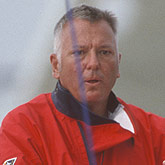
Tony Buckingham has blood of Africans on his hands: Most white people think that when the 'colonial era' ended the brits severed all links with it's ex colonies, far from it . in fact the same can be said for many supposedly ex colonials, they never really left.
That is why European evil men like Tony Buckingham could summon their considerable force of private military contractors to help tyrant Yoweri Museveni commit more genocide in Africa forever. Mr. Buckingham has experience in the field of manipulating political power using private military operations. He has been involved in running military-business complexes revolving around natural resources in places like Papua New Guinea in Asia to West Africa and in particular, in Sierra Leone With professional mercenary groups, which included Executive Outcomes of South Africa under Colonel Ed Barlow, and Colonel Tim Spicer of Sandline International and other extended security businesses including Saracen. In short, Buckingham has the connections and power to deliver and sustain a perpetual monarchy with Museveni and family as the heads.
In 1997, Tony Buckingham and company were given control of Sierra Leone’s biggest diamond venture, the Koidu Diamond mines in Kono district, in exchange for keeping Tajan Ahmad Kabbah who had been overthrown, in power. So far, he has interests in the diamond mines worth several billions.
Tony Buckingham is extremely well connected to powerful figures in the British and other western governments. When they were destroying Sierra Leone in direct violation of the United Nations Security Council resolution banning moving in of arms to escalate the conflict, the governments of UK, Canada and US knew but did nothing to stop him. Today, the mines do not benefit the Sierra Leoneans but Tony Buckingham and company and to some extent those connected to former Kabbah’s government
To be clear, legally, Museveni’s family owns the oil wells, and NOT the Ugandan government on behalf of the people of Uganda as we often imagine or delude ourselves.
This means that all the oil wells belong to Museveni and his family as personal investment and property. The people of Uganda will only get taxes arising from the sale of oil to the government of Uganda.
Has it ever occurred to you to wonder why the government of Museveni does not want to build the hydro-power station at Karuma Falls to generate electricity for the consumption needs of the country? Or even to implement the old plan of building a hydro-power station at Murchison Falls/Kabalega Falls for hydro-electric power generation to supply the entire country? The reason is simple: If there is enough electric power capacity that the two Falls can easily provide, why should the country purchase oil to generate electricity from Museveni and family’s company?
Has it not puzzled most of you that Museveni is very interested in building small hydro-electric power stations across the country, which can only supply inadequate power, even if used for only lighting purposes in those areas? And which cannot support large scale industrialization even in those remote village areas? Think again before you jubilate, fellow citizens. We are in deep crisis. Museveni and family will own the entire energy resources with a select group of foreign companies and players such as Tony Buckingham.
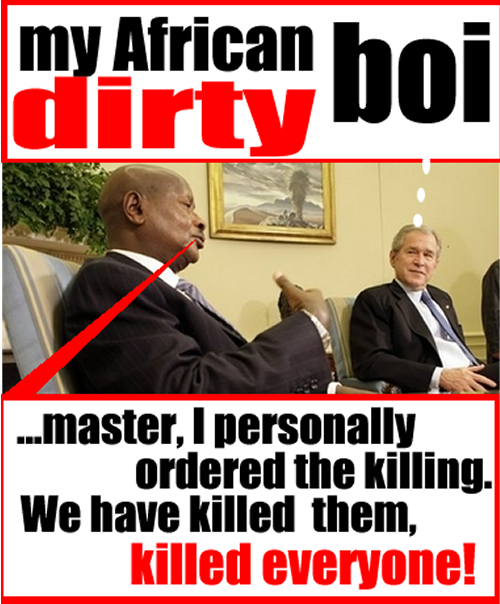
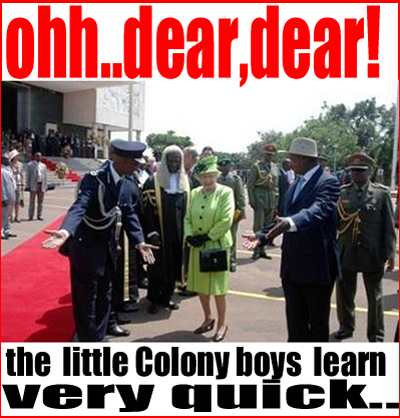
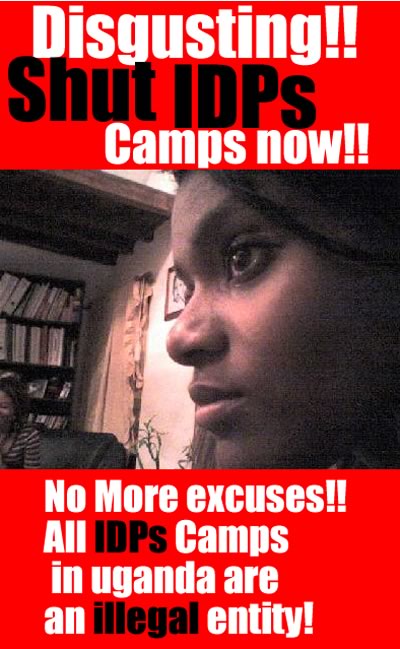
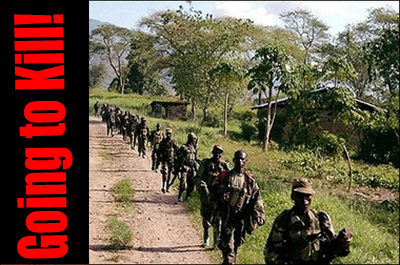


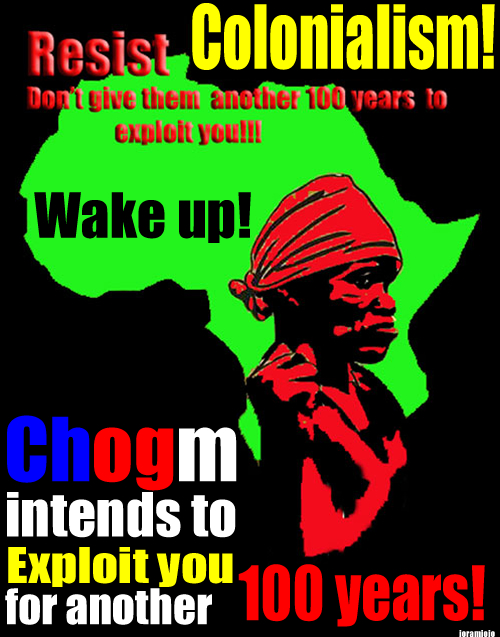
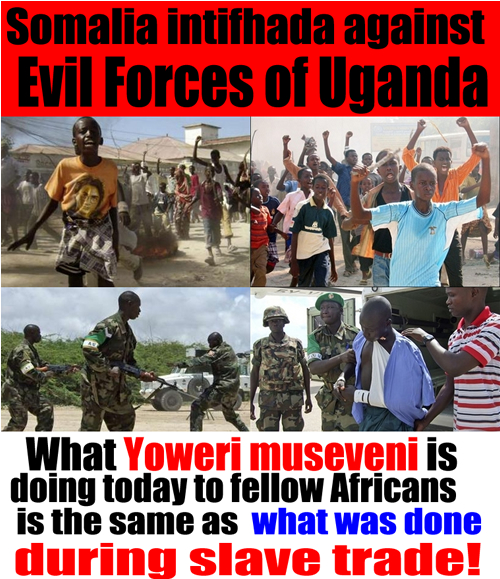
US pays Uganda to arm Somali fighters
By Tabu Butagira
Ugandan troops in Mogadishu have been secretly selling guns and ammunition to Somalia’s struggling Transitional Federal Government on behalf of the United States government, Daily Monitor can reveal.
Explaining American assistance to the TFG during a recent press briefing to US journalists in Washington, D.C., a top US State Department official said Uganda has been supplying arms to Somali troops and picking dollars from Washington.
“We have gone to the Ugandans when the TFG (Transitional Federal Government) has run short of weapons and ammunition and told the Ugandans to provide what TFG needs,” the official, who was not named in the partly classified June 26 briefing, said.
“When the Ugandans provide those weapons, they give us a bill and an accounting for what they have turned over [to Somali government] and we then give them the money to replace the stores and the arms.”
The official said the UPDF has mostly supplied small arms and ammunition and had increased its supplies in May when Somali Islamic extremists increased their attacks on the TFG and government forces.
The UPDF, which is in Somalia as part of an African Union peacekeeping force to the country, is said to have been paid up to $10 million (Shs21b) for arming and training the TFG fighting force. This is the first time the arms-for-cash deal is being made public and the revelations could mean that the UPDF was violating the neutral terms of its peacekeeping mandate by arming one of the combatants.
Authorities in Kampala were quick to denounce the revelations as “a lie”. Lt. Gen. Katumba Wamala, the commander of the UPDF Land Forces, who has been overseeing the deployment of Ugandan troops to help stabilise Mogadishu, told Daily Monitor that “it is Washington that is giving the arms to Somalia. “The only thing we have done is to be the link to pass those weapons to TFG because the Americans cannot be on the ground to do this themselves.”
President Museveni told journalists at a press conference earlier this month that it was fine for the US to arm Somalis to fend off a rebel onslaught on the capital. “These people fighting in Somalia are wasting their time,” President Museveni said at the time. “What a democrat should do in Somalia is allow peace and demand elections.” Details of the arms-for-cash deal emerged as the beleaguered Somali President Sheikh Ahmed Sheikh Sheriff met Mr Museveni in Kampala.
According to a State House statement, the two leaders discussed bilateral issues concerning the two countries and reviewed the situation in Somalia and other regional matters. The US State Department official said that the UPDF had supplied small arms and limited munitions but “not artillery pieces, armoured vehicles or tanks” to the TFG soldiers. “These are weapons that would be used in an urban environment, fighting a counter-guerrilla insurgency,” the official said, “We have provided funds for the purchase of weapons; and have asked the two units that are there [in Mogadishu], particularly the Ugandans, to provide weapons to the TFG, and we have backfilled the Ugandans for what they have provided to the TFG government.”
Shadow Defence Minister Mr Angiro Gutmoi (FDC; Erute North) said he was not aware of the arms-for-cash deal but said such a transaction is “not authorised by the Ugandan Parliament”. The Defence and Army spokesman, Maj. Felix Kulayigye, said the UPDF is only involved in training the Somali forces and securing vital state installations. “I am not aware of what the Americans are talking about and I don’t believe in telling lies.”
Uganda and Burundi have more than 4,000 troops deployed in Somalia under Amisom. The heavily undermanned and underfunded peacekeeping force is meant to secure the Presidential Palace, air and sea ports and the city’s main roads but has come under increasing attacks from Islamic extremists.
The government has defended its deployment in Somalia saying instability in that country, which has not had a functioning government in almost two decades, undermines security in the whole region.
In March, an Ilyushin-76 plane, suspected to be ferrying arms for Amisom troops in Mogadishu, crashed shortly after takeoff from Entebbe airport, killing all 11 people on board; three of them top Burundian army officers.
The manifest of the cargo aircraft, chartered by Dynacorp, an American company, shows the carrier was ferrying at least 16 tonnes of military supplies. The army said then that the plane was carrying mainly tents and water purifiers although the plane’s owner claimed it had been shot down. The claims have not been verified. Transport Minister John Nasasira said last evening that an investigative team led by Col. (rtd) Chris Mudoola is yet to complete its work after failing to locate the plane’s flight data recorder.


